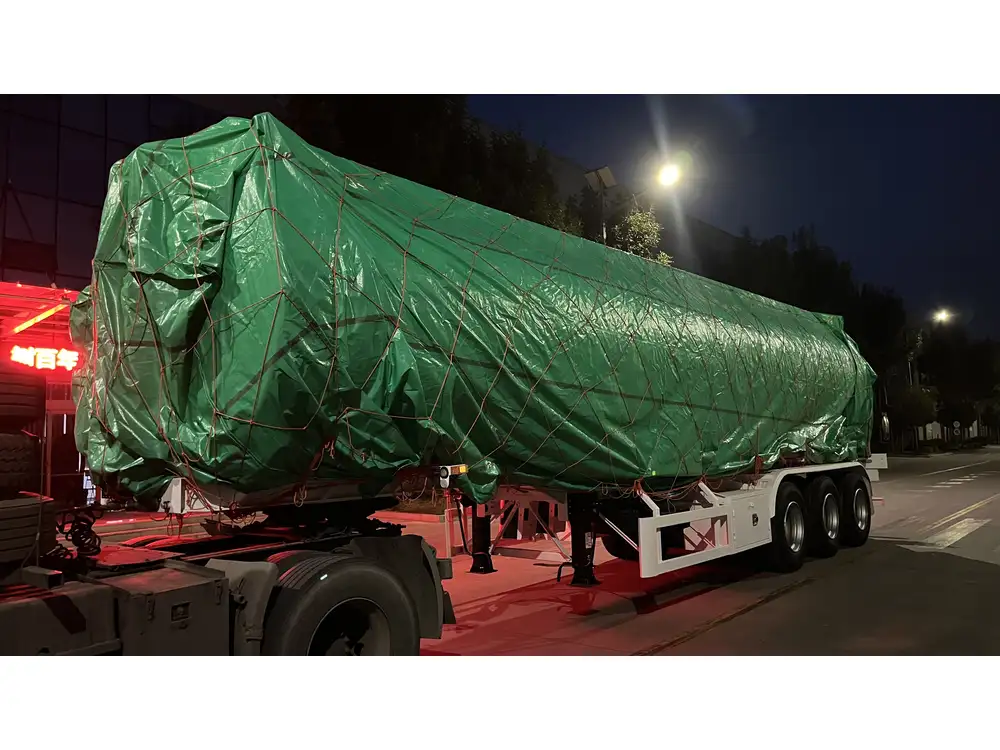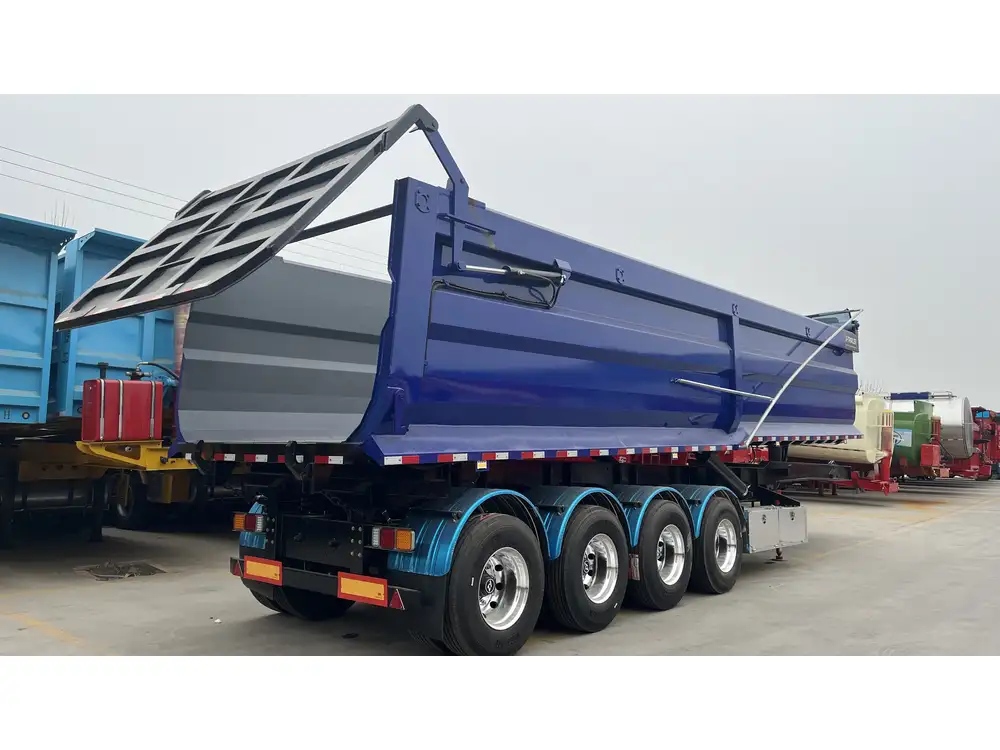The logistical world is bolstered by the powerhouse that is the semi-truck, particularly when paired with a 53-foot trailer, which is the gold standard in the industry for length and utility. Whether you’re a logistics manager orchestrating shipments, a truck driver, or an entrepreneur eager to delve into the transportation sphere, understanding the dimensions of a semi-truck with a 53-foot trailer is essential. In this comprehensive article, we delve into the specifics and nuances associated with this topic, exploring all angles—from sizing and regulations to practical implications for maneuverability and capacity.
Understanding the Dimensions
To accurately assess the total length of a semi-truck with a 53-foot trailer, one must consider several components. A typical semi-truck consists of the tractor unit and the attached trailer.
Dimensions Breakdown
| Component | Typical Length |
|---|---|
| Tractor Unit | 18-24 feet |
| 53-Foot Trailer | 53 feet |
| Total Length | 71-77 feet |
Though the tractor unit may vary in length depending on the model and make, it generally ranges from 18 to 24 feet. Adding the standard 53-foot trailer results in an overall length that typically spans between 71 and 77 feet.

Variability in Length
Different Types of Trailers
Not all trailers are created equal, even if they’re categorized under the “53-foot” banner. Variations include:
- Standard Dry Vans: Generally utilized for transporting non-perishable goods, these trailers offer optimal enclosed space with minimal risk of exposure to the elements.
- Reefers: Refrigerated trailers designed for transporting perishables. They maintain a controlled temperature, adding to their weight and potentially impacting overall load capacity.
- Flatbeds: Used for transporting heavy or oversized cargo that does not fit into a standard enclosed trailer, their dimensions must be assessed based on specific load requirements.
State Regulations
Another factor influencing dimension perception is state regulations, which may impose restrictions on road usage for vehicles meeting certain length thresholds. Depending on your jurisdiction, some states allow longer combinations under specific conditions, meaning that operational length might fluctuate based on regional laws. Being aware of these rules can prevent costly fines and ensure smooth transportation.

Practical Implications of Length
Maneuverability Issues
Maneuvering a vehicle that can reach upwards of 77 feet in length is not a walk in the park. Various aspects come into play:
- Turning Radius: Longer vehicles require more space to make turns, particularly in tight urban areas or rural roads. A typical turning radius for a semi-truck can exceed 50 feet.
- Park & Load Zones: Finding suitable locations for unloading and parking requires advance planning. Bend trailers or parking lots may not accommodate such lengths, impacting delivery schedules.
Bridge Clearance
Bridge clearance becomes a more pressing concern with greater length. Semi-trucks need to be wary of low-lying bridges and overpasses, as exceeding stipulated height limits can lead to transport disruptions or accidents.

Impact on Load Capacity
A semi-truck’s length has significant implications for its load capacity. The standard maximum gross vehicle weight (GVW) allowed on these vehicles generally is 80,000 pounds, including the weight of the trailer, cargo, and tractor.
Load Distribution
Proper load distribution is paramount. Overloading or unevenly distributing cargo can lead to challenging driving conditions, increased wear on vehicle components, and safety hazards. Understanding the approximate weight that can be carried on a 53-foot trailer plays a crucial role in operational efficiency.
| Trailer Type | Average Payload Capacity |
|---|---|
| Standard Dry Van | 45,000-50,000 lbs |
| Reefer Trailer | 42,000-48,000 lbs |
| Flatbed Trailer | Up to 48,000 lbs |
Cost Implications
Understanding the costs associated with operating a semi-truck with a 53-foot trailer is fundamental for businesses aiming for sustainability and efficiency.

Fuel Efficiency
The longer the trailer, the potential for poorer fuel efficiency arises, largely due to increased wind resistance. Fuel consumption can vary significantly across the following factors:
- Load Weight: Heavier loads place a greater strain on the truck’s engine, potentially lowering fuel economy.
- Speed: Driving at higher speeds can induce higher fuel consumption rates.
- Aerodynamics: The design of the truck and trailer influences airflow, which is critical for fuel efficiency.
Maintenance Costs
As with any large vehicle, semi-truck maintenance is paramount. The length and increased complexity of a 53-foot trailer necessitate a more detailed approach to upkeep:
Key Maintenance Areas
- Tires: Regular inspections and replacements are crucial for ensuring safety and efficiency.
- Brakes: Given that semi-trucks can weigh up to 80,000 pounds, brake performance is vital for safe operation.
- Engine and Transmission: Regular maintenance schedules ensure that both engine and transmission are functioning optimally, preventing costly breakdowns.
Safety and Compliance
Operating a semi-truck with a 53-foot trailer entails strict adherence to safety and compliance measures. This includes but is not limited to:
- Vehicle Inspections: Regular safety inspections to comply with DOT regulations are non-negotiable.
- Driver Training Programs: Ensuring that drivers are adequately trained for operating such large vehicles reduces the risk of accidents and injury.

DOT Regulations for Length
The Federal Highway Administration (FHWA) sets length limits for trucks traveling on national highways. While the general maximum allowable length for a combination vehicle typically caps at 65 feet, states may enact specific provisions for those utilizing 53-foot trailers under certain conditions like special permits.
Conclusion: Navigating the Semi-Truck Landscape
Understanding the intricacies related to how long a semi-truck with a 53-foot trailer is not merely a matter of number-crunching; it encapsulates a plethora of factors impacting maneuverability, load capacity, safety, and compliance. As logistics continues to evolve, being informed will equip businesses to navigate the challenges and opportunities presented by the transportation industry.
For professionals and businesses reliant on semi-trucks, investing time in mastering these details can lead to safer, more efficient operations, paving the way for growth in a competitive landscape. This knowledge—integral not only in facilitating user conversion but also in ensuring smooth logistics—ultimately fosters a more robust transportation framework that is essential in today’s demand-driven market.



